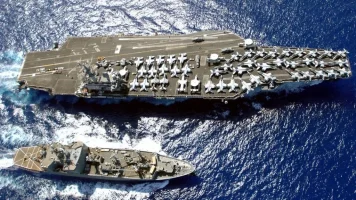- Views: 7K
- Replies: 17

In a notable shift in military procurement strategy, Bangladesh appears to be turning its attention towards the JF-17 Thunder, a joint venture between China and Pakistan. This comes after earlier considerations of acquiring more advanced Western and Chinese fighters such as the Eurofighter Typhoon, Rafale, and J-10CE.
The shift in interest was highlighted when Bangladeshi pilots were recently photographed in the cockpits of JF-17 jets during a visit to Pakistan, as reported by various Pakistani media outlets.
Bangladesh's pursuit of modernizing its air force has been marked by a careful evaluation of various aircraft. Initially, there were reports of interest in the Eurofighter Typhoon and later in the French Rafale, both renowned for their advanced capabilities and technology.
However, the high costs associated with these Western jets, along with potential geopolitical considerations, may have prompted Bangladesh to explore more affordable options.
The interest in the J-10CE, China's fourth-generation-plus fighter, signaled Bangladesh's intent to diversify its military assets and explore alternatives.
The JF-17, priced at approximately $40 million per unit, presents a significantly more affordable option compared to its Western counterparts. This makes it an attractive proposition for Bangladesh, which needs to balance military modernization with economic constraints.
Another key factor contributing to Bangladesh's interest in the JF-17 is the familiarity of its pilots with the aircraft's engine. The JF-17 utilizes the Russian Klimov RD-93 engine, similar to the RD-33 engines powering Bangladesh's MiG-29 fleet. This commonality could streamline training, maintenance, and logistics, reducing costs and easing the integration of the JF-17 into the existing air force structure.
While the JF-17 may not be as advanced as the Eurofighter or Rafale, it offers a balanced package for both air-to-air and air-to-ground missions, aligning well with Bangladesh's defence requirements. Furthermore, its design allows for future upgrades, ensuring the aircraft can remain relevant as technology advances.



